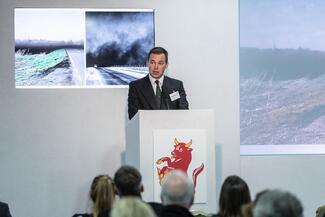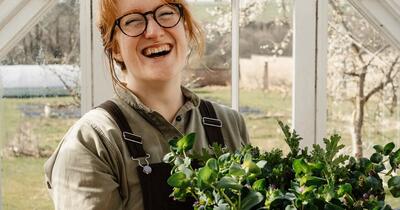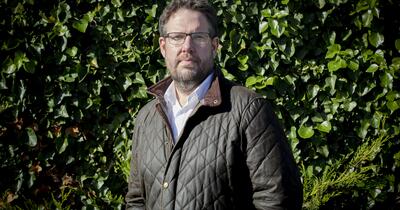
Cambridgeshire arable farmer Toby Simpson NSch 2022 has published his Nuffield Farming report entitled ‘Catch and cover cropping opportunities in UK arable agriculture’, sponsored by McDonald's UK & Ireland.
The full report is now available on the Nuffield Farming report library and his report video is available on the Nuffield Farming YouTube channel. Toby presented the findings of his report at the 2023 Nuffield Farming Conference in Exeter. A recording of his presentation is available here.
During his Scholarship, Toby travelled to Norway, Sweden, Denmark, Germany, France, USA, Canada, and the UK. He aimed to understand the practicalities of a cover cropping system and explored what wider opportunities that can arise as a result.
“When leaving fields empty, we are essentially farming naked,” he explains in the report. “Cover crops provide the opportunity to not only add cover but layer the soil with new enterprises and diverse income streams—improving not only public engagement but farm business resilience.
“Cover crops are the keystone to the biological, chemical, and physical function of the soil; a living root will physically structure, biologically feed, and chemically alter the soil around it. Cover crops form part of a more extensive system of soil health which farmers must look at in the context of their own soils and climate.”
Toby believes that setting clear, achievable objectives will help farmers adopt cover cropping successfully: “These objectives will help when considering the choice of the cover crop's functionality, diversity, and density.
“The function will inform the species selection, establishment, management, termination, and following crop performance. Cover crop diversity will provide a plethora of above and below-ground residue that will feed a multitude of microbes and help cycle soil nutrients. Plant density will influence the function in several ways, from weed suppression and water management to CO₂ cycling.”
Study objectives
- What place catch and cover cropping has in UK arable agriculture.
- On-farm practicalities and best practices when adopting cover cropping.
- The wider opportunities around catch and cover cropping practices.
Messages
- Cover crops are the keystone to the biological, chemical, and physical function of the soil.
- Growers need to understand the carbon and nitrogen ratios and cycles in the soil for successful outcomes. Feed the soils and they will feed the plants.
- When growing cover crops, think FDD; functionality, diversity, density.
- Build resilience into a farm business by farming layered, additional enterprises can create new opportunities.
- It’s important to consider individual context as it will vary between individual farms and fields.



